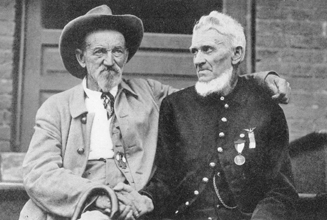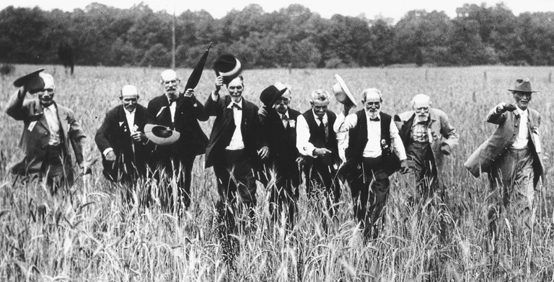Remembering the day of days at a place called Gettysburg.

The fateful charge of Pickett’s Brigade came on July 3, the third day at Gettysburg. With tens of thousands watching in awe, these brave men set off beneath the fierce afternoon sun. A mile of farm fields separated them from the Union soldiers up on Cemetery Ridge, but come what may, they were intent on coming to grips with their enemy.
Proudly they marched, battle flags waving, a spectacle more dramatic than anyone there had ever seen. As they drew close, the rebel yell broke from their throats.
The Yankees, crouched behind a stone wall, could wait no longer. Hearts about to burst with emotion, they flung themselves forward to meet the enemy.
And then everyone hugged and cried.
Because this was not the Battle of Gettysburg. It was the veterans of Gettysburg, North and South, reenacting the battle fifty years later to the day. The survivors of Pickett’s Charge retraced their steps with canes and crutches, as their Union counterparts and more than a hundred thousand spectators looked on. The very men who in their youth had fought as bitter enemies now united to walk the field of battle in peace.
The white-haired veterans, many wearing the same uniforms they had fought in fifty years before, exchanged handshakes where they had once exchanged gunfire. Enemies no more.

“AS THE REBEL YELL BROKE OUT AFTER A HALF CENTURY OF SILENCE . . . A MOAN, A GIGANTIC SIGH, A GASP OF UNBELIEF ROSE FROM THE ONLOOKERS.”
— PHILIP MEYERS, A SPECTATOR OF THE EVENT

The battlefield became a field of tents as fifty-three thousand Civil War veterans, Union and Confederate, came to the 1913 Grand Reunion at Gettysburg. It’s almost the exact same number of men who were killed and wounded in the pivotal Civil War battle.